40 dark brown full brogue oxfords, made by shoemakers from all over the world. Here’s a substantial review of all the competition shoes that entered the World Championships in Shoemaking 2019. Info, comments, pictures of the shoes and in some cases also the manufacturing process.
In the words of Jesper Ingevaldsson of Shoegazing Blog
It has taken some time (especially since I’ve been very busy the last few weeks), sorry for that, but finally the summary of all contestant shoes 2019 is finished. A new record in length for a post (or posts) here on Shoegazing (has taken more than 50 hours to put together including all the work with the pictures…), so lots of greatness for you to go through.
Part of the London Super Trunk Show at the end of March was the second edition of the World Championships in Shoemaking, organised by Shoegazing and The Shoe Snob. It was set-up in collaboration with online retailer Kirby Allison’s Hanger Project, book project Master Shoemakers, and private person Edmund Schenecker, who paid the substantial prize money of ?3,000 to winner, ?2,000 to second placed and ?1,000 to third placed.
The top three shoes also will go on tour around the world now (together with the winning shoes in the patina championship), to be showcased for as many shoe lovers as possible. We have a mix of new locations and stores, and some that were part of the tour last year (the plan is to continue to vary the tour from year to year). The preliminary tour schedule is as follows:
| Week | Date | Store | City, country |
| w22 | May 31 | The Hanger Project | Dallas, USA |
| w23-24 | June 5-16 | The Armoury | New York, USA |
| w26-27 | June 24-July 7 | The Armoury | Hong Kong |
| w29-30 | July 15-28 | Unipair | Seoul, South Korea |
| w32-33 | July 29-Aug 18 | Medallion Shoes | Beijing, China |
| w34-35 | Aug 20-Sept 1 | Medallion Shoes | Shanghai, China |
| w37-38 | Sept 9-22 | Isetan Men’s | Tokyo, Japan |
| w40-41 | Sept 30-Oct 13 | Skoaktiebolaget | Stockholm, Sweden |
| w43-44 | Oct 21-Nov 3 | Skomaker Dagestad | Oslo, Norway |
| w43-44 | Oct 22-Nov 4 | Mason & Smith | Singapore |
| w46-47 | Nov 11-24 | The Decorum | Bangkok, Thailand |
| w49-50 | Dec 2-15 | Oakroom | Taipei, Taiwan |
| w2-3 | Jan 6-19 | Upper Shoes | Paris, France |
At the London Super Trunk Show all competition shoes were on display for the around 1,000 people who visited the event during the day, and at the award ceremony in the evening top ten were presented. The shoes and the competition once again gained a huge interest and admiration, and also afterwards the attention has been big. We are very happy that the shoemaking community has accepted this competition, giving it and the contestants well-deserved recognition. As we’ve said before, it takes guts to send in a shoe for review and put your efforts on display like this. It’s a great thing that all shoemakers, both the ones who have done this for many years and the real beginners, all say that they’ve made the best shoe they ever have for the contest, and learned a lot from the making of it, things they normal production will benefit from.
The day before the event the shoes were reviewed anonymously by the jury, which consisted of:
Patrick Frei, bespoke shoemaker, winner 2018
Philippe Atienza, bespoke shoemaker, 2nd place 2018
Jim McCormack, bespoke shoemaker
Nicholas Templeman, bespoke shoemaker
Yohei Iwasaki, bespoke shoemaker
Patrick Verdillon, Director bespoke John Lobb Paris
Kirby Allison, founder of The Hanger Project
Gary Tok, author of Master Shoemakers
Edmund Schenecker, bespoke shoe customer
Jesper Ingevaldsson, Shoegazing
Justin FitzPatrick, The Shoe Snob
The criteria that were set out for the competition shoes were as follows:
Full brogue oxford model (4-6 separate leather pieces, brogueing along all edges of the leather pieces, wingtip and medallion is mandatory, further decorative brogueing and decorations are ok though not necessary, but no contrast stitching)
One left shoe, size UK8 (or corresponding size)
Dark brown box calf upper (aniline dyed leather)
Single leather sole
Hand welted, handmade sole stitch
Dark brown sole and heel edges, natural colored bottom (decorations with for example wheels or nails are ok, but no dye or burnish)
Finished inside of the shoe, with sock lining etc.
No branding
Shoes were displayed without last or shoe tree for the jury (if shoe tree was provided these were only used when showcased during the event)
Competitors could enter both as a company or as a person. All persons that had been part in the making of the shoe should be stated, and which process(es) each person have made (we haven’t received full info on all competitors, but most).
The criteria that the jury reviewed were the following:
Degree of difficulty (maximum 10 points)
Jury look at how complicated construction methods that have been used, how advanced they have been built both in large and in smaller details, etc.
Execution (maximum 10 points)
Jury look at how well the various parts of the shoe construction have been made, how neat and clean the work is, how well executed the level of finishing is, etc.
Design / Aesthetics (maximum 5 points)
Jury look at the overall aesthetics of the shoe, proportions, etc.
So, below first the full list of results, then a walkthrough of all competition shoes, from position 1 to 40 (1-10 in this post, 11-40 in another post to come tomorrow). The level of many of the shoes are superb, and it’s worth noting that there were only 25 points between 3rd and 10th place (205 points to 180 points), so very close (also the positions just outside top ten were tight). There’s more pictures and text on the top position shoes, especially now with so many entries I had to do things a bit more condensed to make it workable (It has taken around 50 hours to make this post…), but all have a brief summary and at least 4 pictures of the shoes from various angles. In some cases of the top 10 shoes I’ve also included pictures of the making process. Click the pictures to see larger versions, to really get a look at some of the wonderful details that’s to be found.
.
Results (click on maker/brand to go directly to the summary (11-40 to come tomorrow)):
1. Daniel Wegan
2. Christophe Corthay
3. Eiji Murata
4. Victor Vulpe
5. Atelier Zakarian
6. Louis Lampertsdörfer
7. So Tsuchiya
8. Anthony Delos
9. Per Nobile
10. Raz Maftei
11. Dettagli D`Autore
12. Yim Shoemaker
13. Perticone – Seiichi Yoshimoto
14. EuGo
15. Athanase Sephocle
16. Kiyo
17. Lu Yang
18. Fumiya Ando
19. Barbavitra Shoemaker
20. Sergey Grechushkin
21. Naoki Sugimoto
22. Reid Elrod
23. Masachika Morita
24. Oh Sang Jun
25. Rozsnyai Handmade Shoes
26. Valentin Frunza
27. Tomohiro Inamori
28. Jan Buda
29. Lawart
30. Alexey Sod
31. Andrey Kaveshnikov
32. Taichi Shimizu
33. Ivan Below
34. The Last Shoemaker
35. Mikhail Burov
36. Masami Ishizuka
37. Francesco Masci
38. Batyr Bikbulatov
39. Thivakaran
40. Sebastian Makowski
.
1. Daniel Wegan

Last year’s runner-up Daniel Wegan returned with an even more amazing shoe this year, earning him the world champion in shoemaking title. His shoe is a true exhibition piece, reminiscent of how many contest shoes could look like in the late 1800s or early 1900s, when shoe contests was a huge thing around the world, and makers pushed the craft with their entries. It is 100% handmade solely by Daniel Wegan himself, the upper is hand stitched and even the toe and heel plates have been made by hand by him. As Daniel describes it he has put a lot more effort into making this shoe than last year, he didn’t count exactly but up towards 150 hours. Especially the stitching of the uppers were time consuming.

The first thing that strikes you looking at the shoe is of course the super narrow last shape, and also the pattern and how the sole and waist follows the same exaggerated style. Looking at it from below the super slim waist impresses, not much more than a couple of centimeters narrow, and then with the delicate horse shoe heel. The more you look, the more you discover. The upper is hand stitched at 21 stitches per inch (more than most uppers stitched with a sewing machine), the brogue holes and the gimping (the zig zag along the leather edges) are all punched out by hand. Along the opening he has also braided the stitching, raising the level of difficulty further.
Sole stitching is made at 25 stitches per inch (counted and confirmed by the jury), with a very thin thread. Here you find one of basically only tow flaws of the making, with the tight stitching Daniel struggled a bit to finish the welt perfectly neat. The other small miss is that due to the pattern not being 100%, a few brogue holes have become slightly crooked. The back part of the shoe has a distinct ridge following through from the back with the heel stiffener down through the heel, built with thin layers. It is not only that the level of difficulty on the shoe is high, everything is done almost flawlessly as well, very neat and tidy making.

According to Daniel the upper-making was taking the most time, but perhaps most difficult was building the heel. It had to be built separately, and to make each layer smooth and keep it in place as they were added was a huge challenge. A lot of things that he did to this shoe are things he never had done before, things he had only seen on old exhibition pieces or in shoe history books. Could go on and on about the shoe, but best is probably to look closely at the pictures, and of course, try to catch them on their world tour if you get the chance.

The jury consistently gave this very high points, especially on difficulty and execution, while a bit lower on aesthetics. A word on the expected discussion about these shoes (and some others in the contest) with it not being wearable, “not looking like” a shoe, and so on. The contest does not specify wearability, we only specify the size to be around UK8/EU42 (which this shoe is in length). The purpose of this shoe and other shoes taking things to a more extreme is to showcase what can be done with shoemaking, not to make shoes to be worn. Look at it like concept cars, which have the same purpose, and just like in those cases some things done for the exhibition pieces can be transferred and used for regular production as well, things that one might never have tried if there were limitations.
I can understand that people think the shoes should look more “normal”, in the same way as I hope that people can understand the criteria in this contest (which, again, is inspired by the old days’ shoemaking competitions). Perhaps next year we will specify also the width a bit more, saying for example that it should be standard width +- two width sizes, or something like that. Wearability will never be part though, both because of the reasons stated above, and because of it being impossible to define it and judge it (I mean, where do you draw the line..?). Also, it would be quite boring to look at 40 shoes looking more or less similar to each other, it’s the variety of artistic pieces and more common, often also amazingly made, however look at the 3rd placed shoe below, shoes that make this contest a treat. (Being The Shoe Snob, I cannot say that I so much agree with this sentiment as this is where design/pattern making sets apart the shoemakers which for me plays a pivotal role in being a good shoemaker)

If some of you did not yet know about the Swede Daniel Wegan, he is one of the wonderchildren of the bespoke shoe world. He wanted to learn how to make shoes, so he moved to England nine years ago and went knocking on the doors of the shoemaking firms in London and Northampton to find a job. Gaziano & Girling let him in, where he swapped the floors and helped out in the factory, in exchange of time to follow the making in the bespoke department. He started trying things out, and after a while was allowed to do some repairs on their bespoke shoes. Evenings, nights and weekends he spent making shoes in his apartment. He soon worked full time in the bespoke department, learned lastmaking, and has now since several year’s been the manager of the department. He is employed as Head of the bespoke department and lastmaker, this is his dayjob, then still in the evenings and weekends he works as freelancer for G&G and do bottom making in the “small factory”, his apartment (where three out of four rooms, plus kitchen, are workshop areas). Learn more about Daniel and Gaziano & Girling bespoke in the article series following a bespoke order from start to finish, found under the headline Bespoke on this page.
Now, enjoy some more pictures of the shoe.







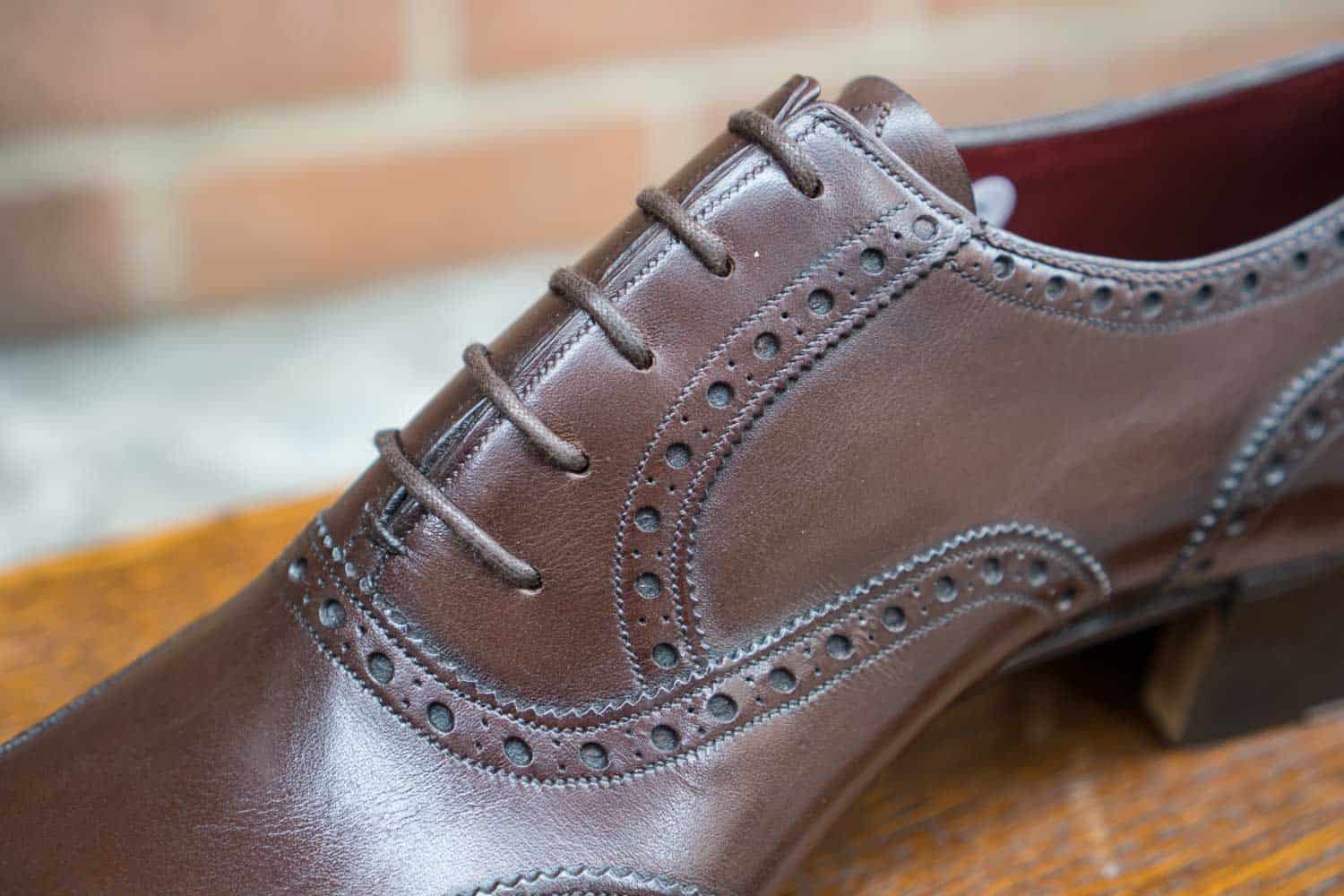











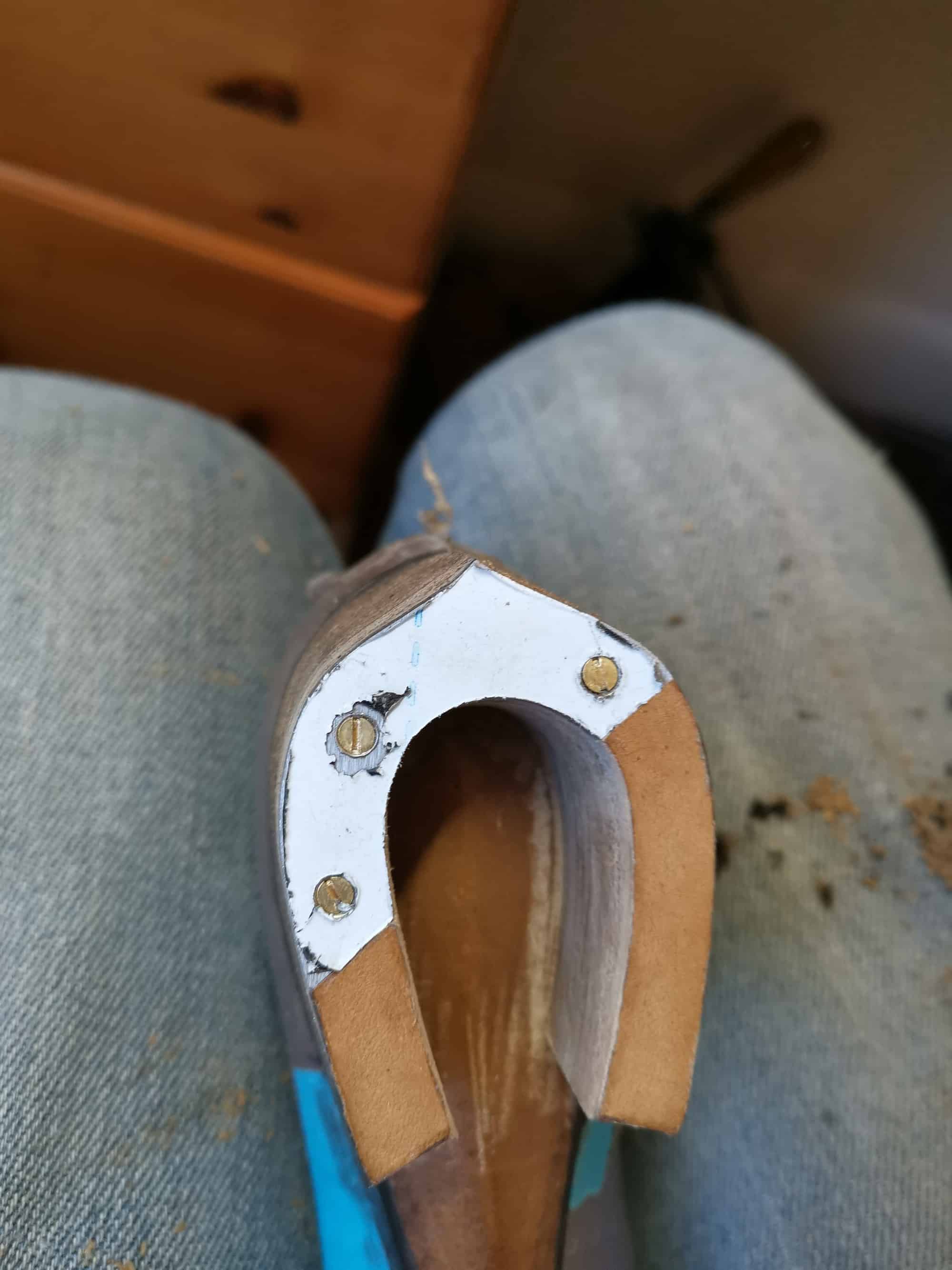
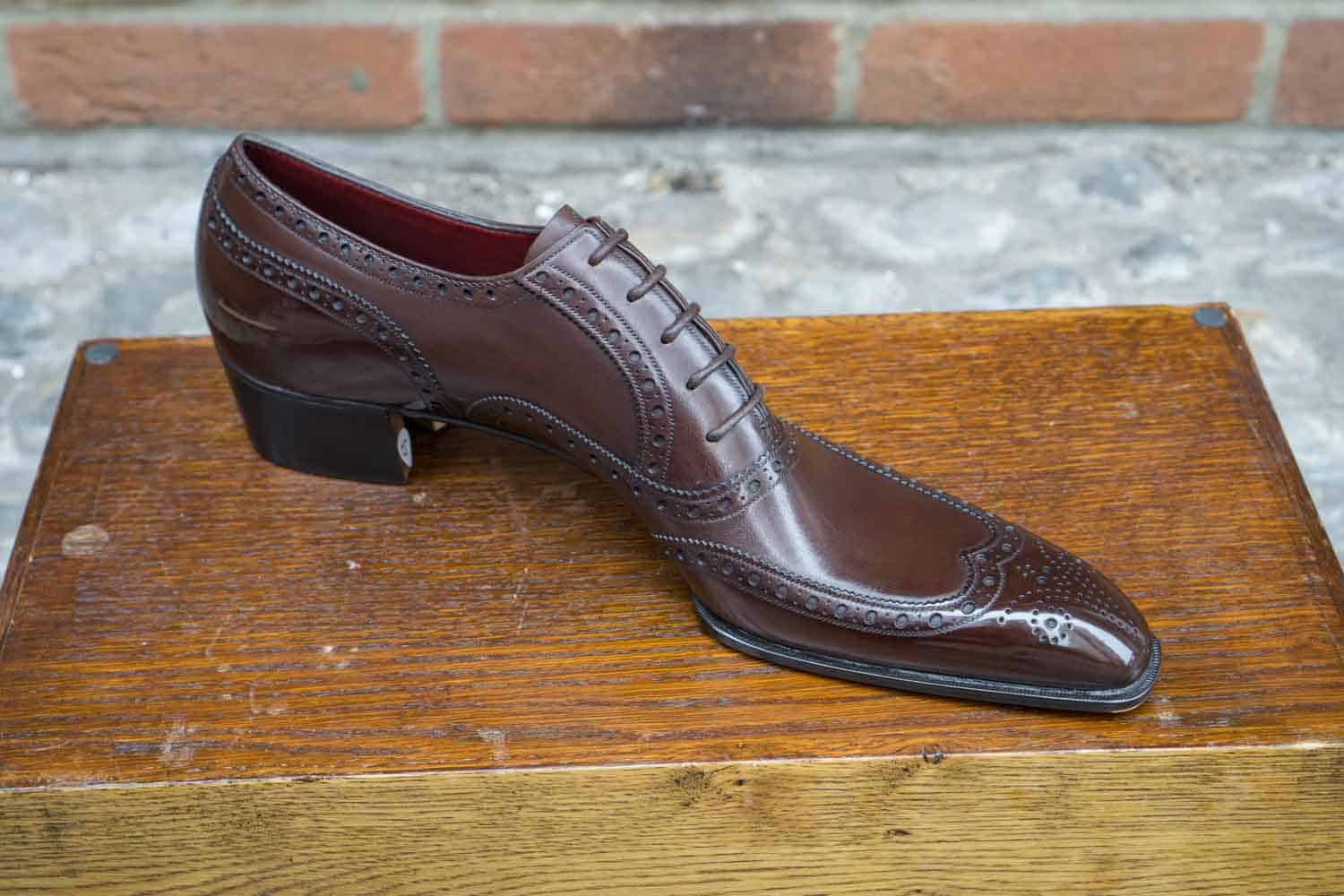
.
2. Christophe Corthay

Christophe Corthay, France, finished in 9th place last year, and similar to Daniel he has returned this year with a shoe even more well-made and ambitious, where Christophe have made it all himself. It certainly stands out as well, though more because of the sublime contrasted braided sole stitching and the matching orange piping and tassels, plus of course the awesome heel.

For Christophe Corthay and his brand Atelier du Tranchet, this look is not spectacular though, they make much more dramatic shoes for their customers. There’s no doubt that a lot of work have gone into it though, with excellent execution of the entire shoe, from the brilliant closing work of the upper with distinct rows of stitching and the decorative punched decorations all over, to the clean sole work and very complicated heel building. Here we also see that narrow bevelled waists is not everything, this shoe has a square outside adding weight to it, while the braided sole stitching still keep the level of difficulty high.

Christophe Corthay is probably one of the most famous names of the contest. Having worked alongside his brother Pierre with Maison Corthay for several years, he left to continue on his own a few years ago. Together with Christophe Algans he now runs the Atelier du Tranchet/Tranchet Vif project, where they apart from shoes also makes other excellent artistic pieces of leather.



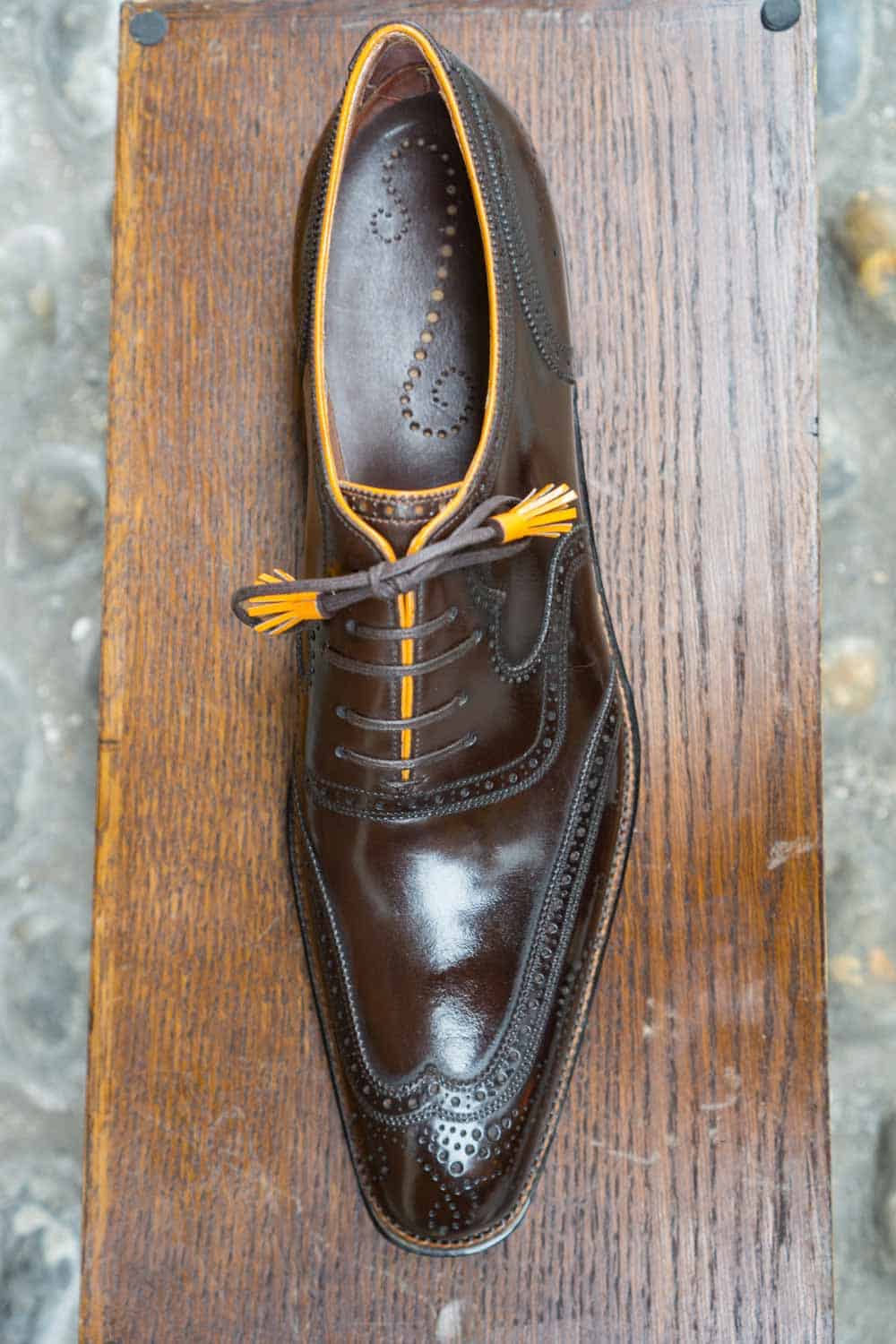
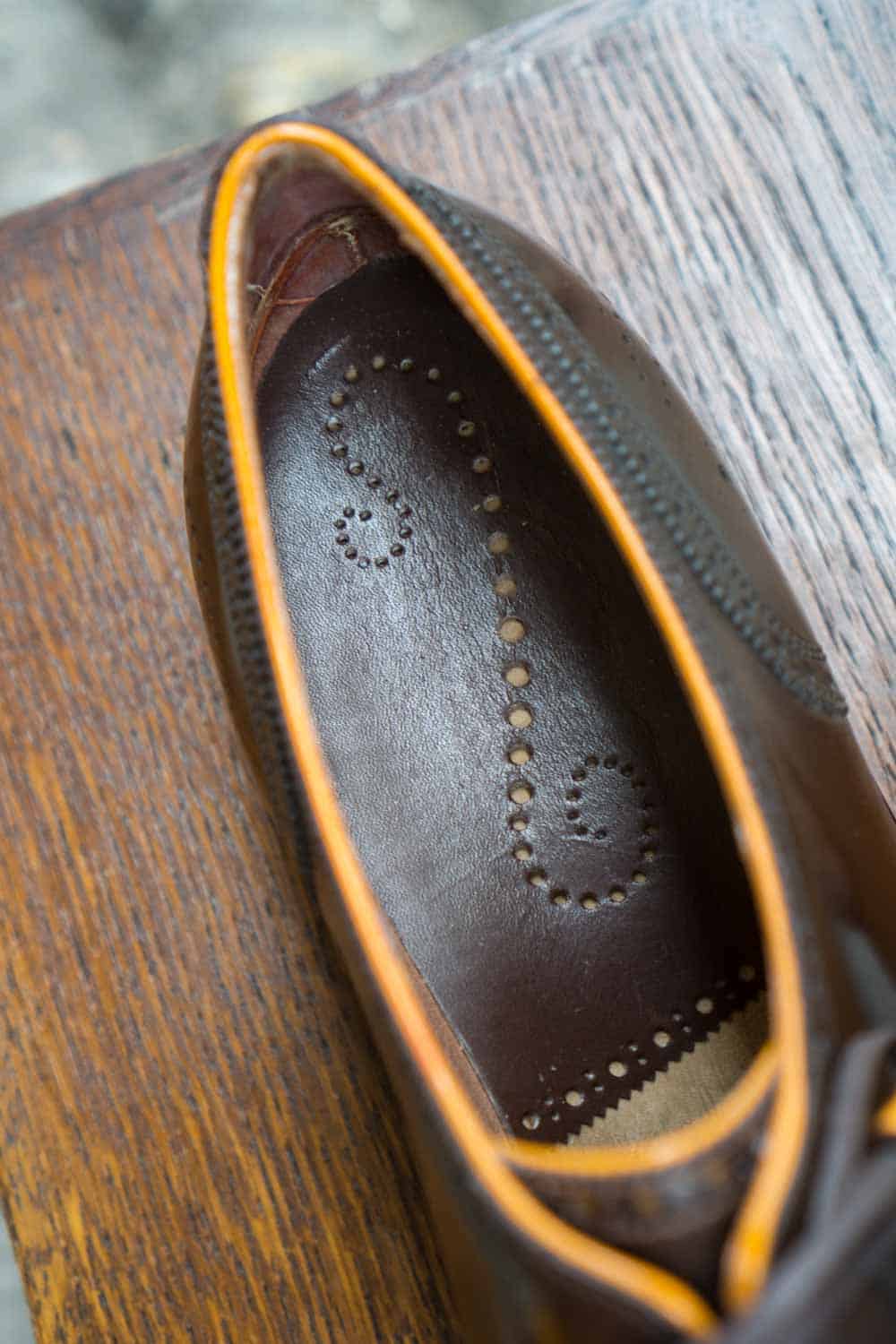

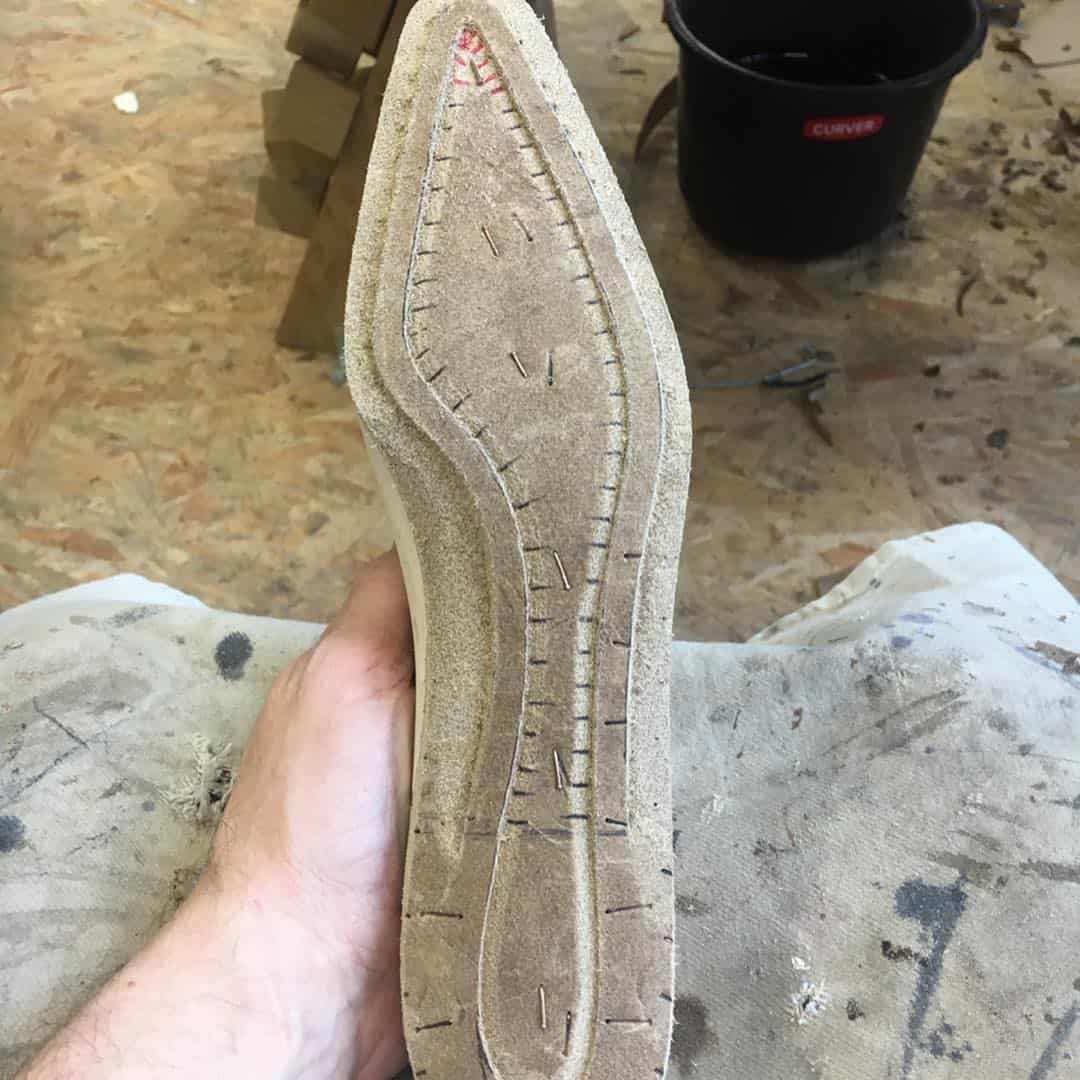





.
3. Eiji Murata

This shoe is a very different cup of tea than the two previous podium shoes. Made by the mythic Japanese bespoke shoemaker Eiji Murata, who runs the brand Main d’Or all by himself, it’s a shoe that may look quite plain and “normal” at first sight. However, when you begin to look closer, you realise that it almost looks like a computer-made, 3D printed shoe or something, the level of the execution is the best possible, jury points in this category were very high.
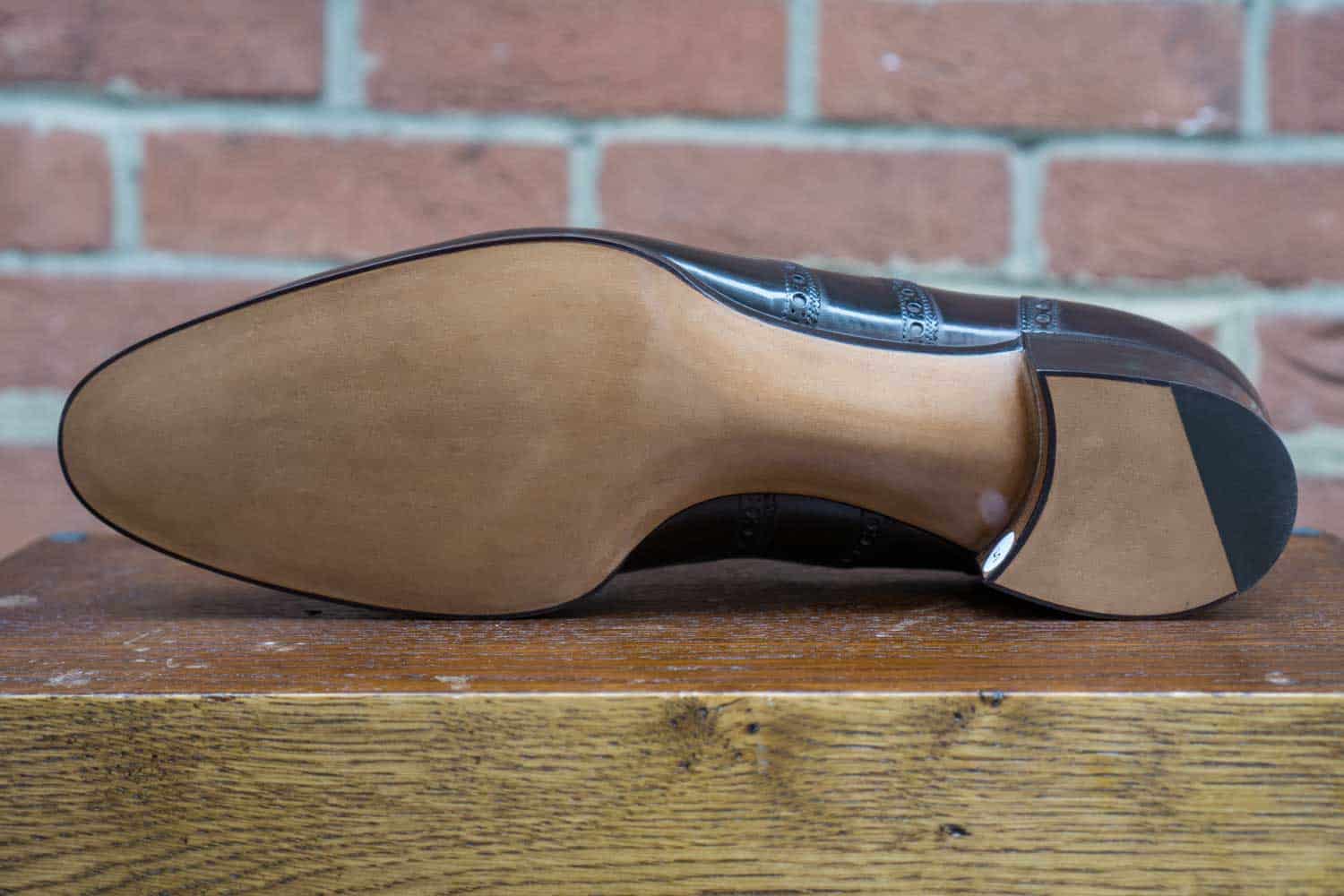
Also Eiji have done the whole shoe himself, and it’s a wonder of exact craftsmanship. It is made on a standard last shape of his, and the making in general is actually quite similar to his normal bespoke work, although he has used a finer fudge wheel for the sole stitching (18 spi, stitches per inch), made the waist more narrow, perhaps been extra careful when doing the finishing, etc.

Eiji Murata is trained in Japan, and works by himself from a workshop in Chiba outside of Tokyo. He is hugely admired domestically and internationally for his excellent work, and today the waiting time for an order is around 2 years, to keep times down he has stopped taking orders from new customers for the time being. You may read a buyer’s guide to Eiji Murata/Main d’Or here, and a large report here.





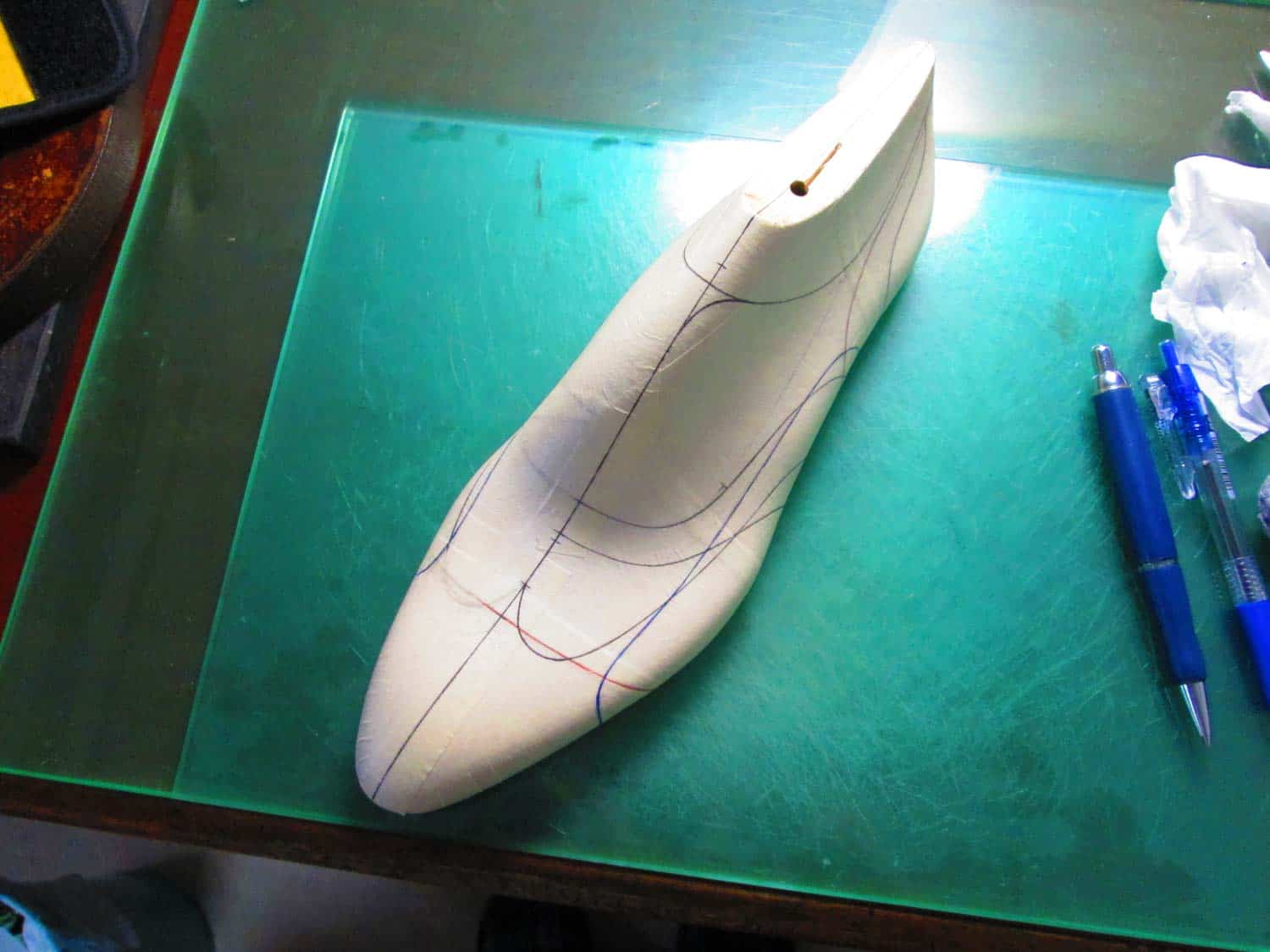







.
4. Victor Vulpe

Romanian shoemaker Victor Vulpe is probably a new name for many has worked with leather craft for 25 years, and since 12 years he started to make shoes as well, trained by himself by looking at other shoes and reading lots of historic books. If Eiji Murata’s shoe received top on execution but a bit less on difficulty, here it’s the other way around. A lot of complicated processes have been put into this shoe, perhaps not always executed to perfection, still all very good.

Especially impressive is the pattern and upper making, where he has tried to keep a long line going through the whole upper, and where the side of the shoe has a very complicated solution where the pattern is sort of folded over itself, very creative. It also has the brogueing coming along down on the bottom towards the very narrow and thin waist, something very rare to see. Other cool features are for example the nails going into the side of the heel which together with the finishing of the side of the heel top piece makes it looks like something is burning inside the heel, or the decorative metal toe tap.








.
5. Atelier Zakarian

Atelier Zakarian is a Russian bespoke shoemaking company, with the three brothers Ashot, David and Seva now running the family business, which was founded in 1963. They make both bespoke men’s shoes and women’s shoes. Their competition entry was inspired by Byzantine architecture from ancient Rome.

The shoe is very well-made, with clean making and finishing, and some nifty details like the built up decorative ridge of the sole (jury discussed if there were to be any deduction of points due to it by definition weren’t a single leather sole, since this was added, but we decided not too) which continues over to the heel. The main drawbacks are on the pattern making and balance of the last, which isn’t 100%, the shoe feel a bit off.





.
6. Louis Lampertsdörfer

Similar to last year, Gaziano & Girling employees manage to snap two top six positions in the contest (that time it was Andreas Reijers who came in sixth place, apart from Wegan on the podium), which is quite impressive. The German Louis Lampertsdörfer has been an apprentice of the Kettering firm for some time, lately reaching a level where he started working on customer shoes, which this shoe is evident of. The upper closing has been made by Samuel Norsworthy, all other parts by Louis.

The shoe is both well-made with a decent difficulty level, although not in the absolute top on each of the categories. It did receive relatively high scores on design though, despite not being anything spectacular, but a good looking pattern and shoe is still something desirable, and as easy to make as some might think.




.
7. So Tsuchiya

The shoe by Japanese bespoke shoemaker So Tsuchiya surely catch people’s attention. It quickly became called “the clown shoe” among jury members and visitors of the super trunk show in London, yet it actually has its foundation in a type of old military boots (where the toe was big to hold a large steelcap), although with the design exagerrated. Looking past the striking design, this is a nicely made shoe.
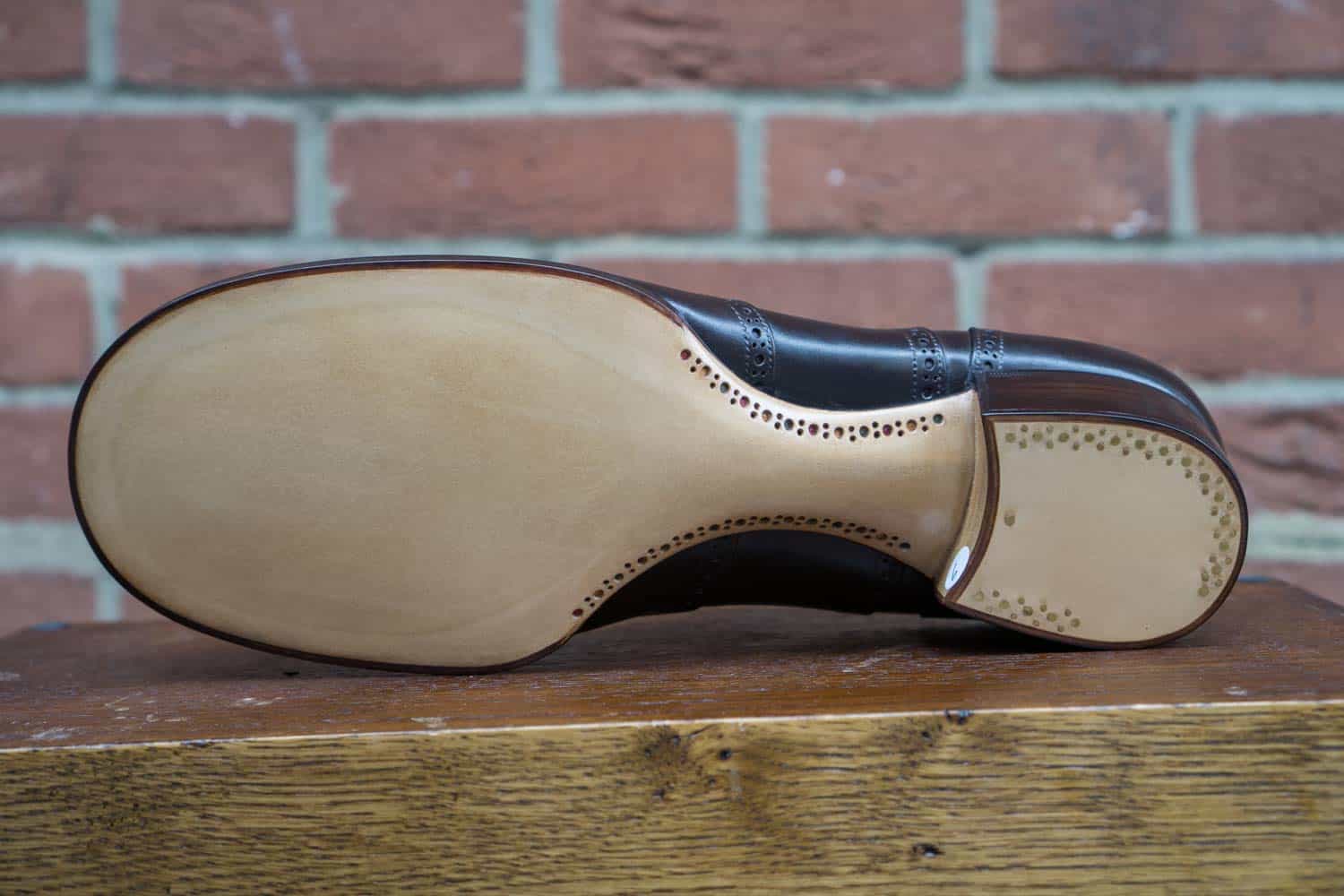
The combination of the big toe and the slim waist is striking, and the nifty decoration with coloured brogue holes at the waist, which also is used inside the shoe, is a nice wrist. Both the upper and bottom making is of a very high level. It’s also worth noting, that making shoes with this type of large toe is a complicated procedure, especially when it comes to lasting the upper and when removing the last (cause yes, the toe is fully hollow, lots of wiggle room here). This type of design is not something that So Tsutchiya only made for the contest, it’s this style of shoes that he offers. He is trained in Japan under Hiro Saito and Reiko Tsukui.







.
8. Anthony Delos

A very famous name within the field of bespoke shoemaking, the Frenchman Anthony Delos who used to run a hugely acclaimed firm under his own brand, but who have been working for Berluti’s bespoke department for a number of years now, running their second workshop from his hometown a bit outside of Paris. His shoe is also one of those full of nice details, especially on the bottom of it.

Here you find Anthony’s charecteristic flower/tassel decoration both as sort of embossed gold coloured holes under the sole, and on the brass heel plate. The shoe gets a bit of a special appearance with the thick sole and storm welt, combined with the blind welted waist and tasseled lacing. The making is really good, but the level of difficulty is lacking a bit, not quite up there with some of the shoes placed higher in the contest.





.
9. Per Nobile

The second Russian firm in the top 10. Per Nobile is a company that offer the full outfit for men in Moscow, both suits, shirts and then bespoke shoes. A long list of people were involved in the making of the shoe, all done under the surveillance of Mikhail Lozovskii who is the head of the shoemaking department. Pattern was made by Davletshina Alfia, last by Lukashevich Stanislav, upper closing by Lozovskaya Larisa, Petrova Tatiana, Constantine Drobitko lasted the shoe, Karpov Anton did the bottom making and Sergey Belyakov the finishing.

Especially the upper is a work of art on this shoe. The pattern and the closing is of the highest level, with a gorgeous varied sizes of the brogue holes who also has two levels, really superb. The balance and look of the last and the special pattern is also top notch. A truly uniquely looking full brogue shoe. The bottom making was not of the same high level, a bit more plain both in terms of difficulty and execution, still good but not of the same top level as the upper.
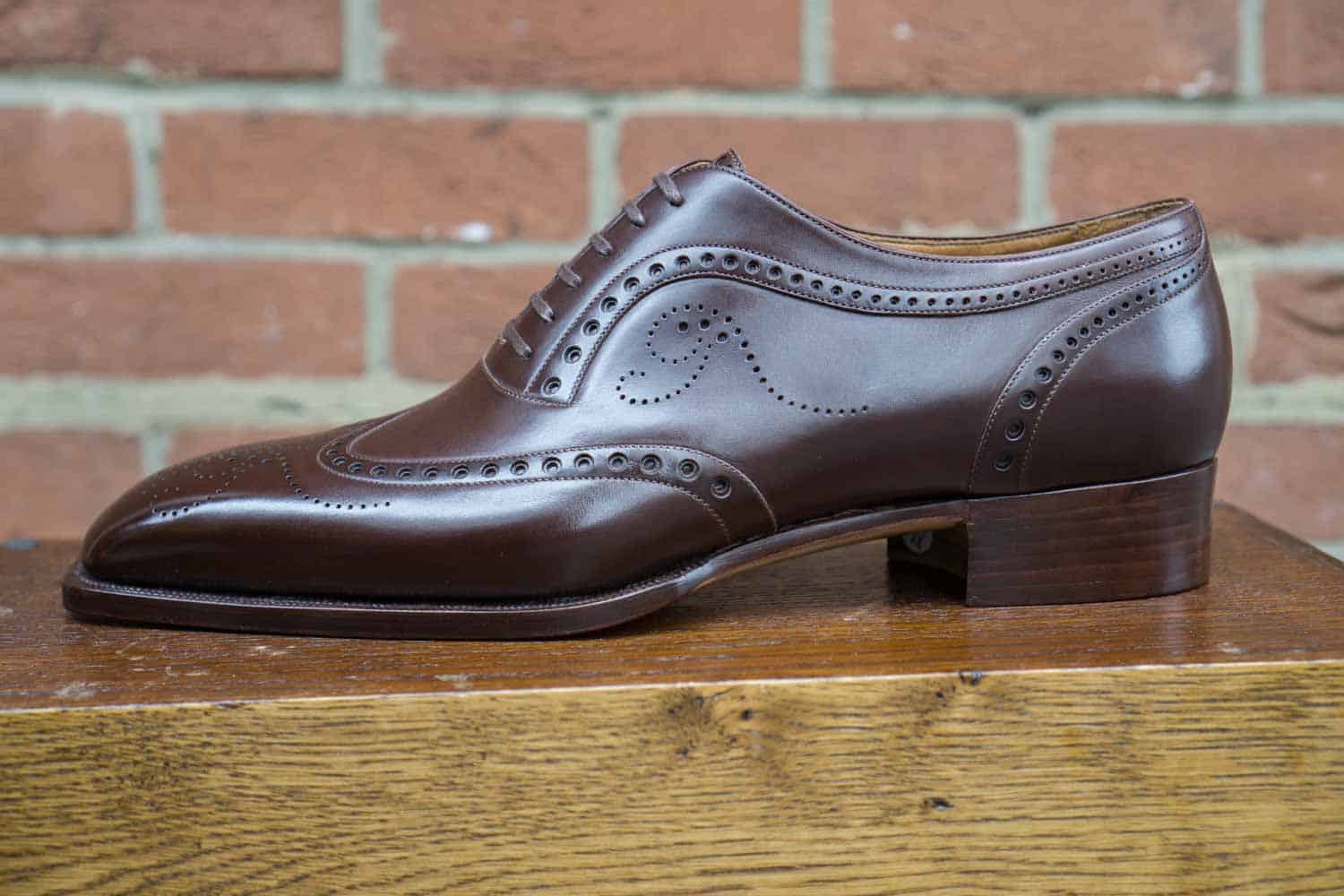







.
10. Raz Maftei

Another shoe where the upper is the most noticeable part, made by Austria-based Raz Maftei. Some impressive skills with the sewing machine has been needed, where both parts of the medallion and decorations along the lacing is stitched, along with special transitions along the brogueing. Complicated and well-executed for sure.

The bottom making is not as refined, even if the sole stitching is relatively tight there’s not too much special things going on here. Raz Maftei used to work together with his family under the Maftei shoe company, nowadays he runs a separate workshop in Vienna called Feines Massschuhe Atelier. The shoe has been made entirely by Raz, apart from the centre hole in the medallion, which his daughter Bella Maftei has punched (*leave room for sighs-of-cuteness*).













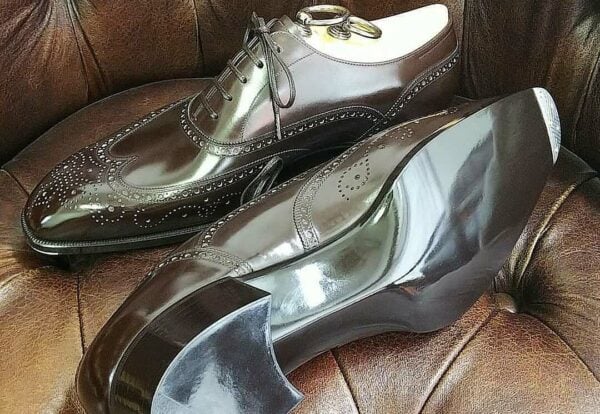







All details of top, since the first place are sewed by a laid on seam. What does such footwear differ from the RTW footwear sewed at factory in? About what skill can there be a speech? Any work where details would be sewed by a waste seam. In the 19th century of the master the ability was shown on usual skin doing up to 64 stitches on inch. But to whom and did not come to mind to sew a welt with a sole doing as much as possible stitches on inch it is full idiocy. Stitches at sewing together of a welt with a sole have to look as beads, and these are 2.5-4 mm. depending on thread thickness. Only who can be marked out, this is Daniel Vegan and that, only because of integral under a treasure.
Google translate is not Valery’s friend.
The shoes are amazing, though.